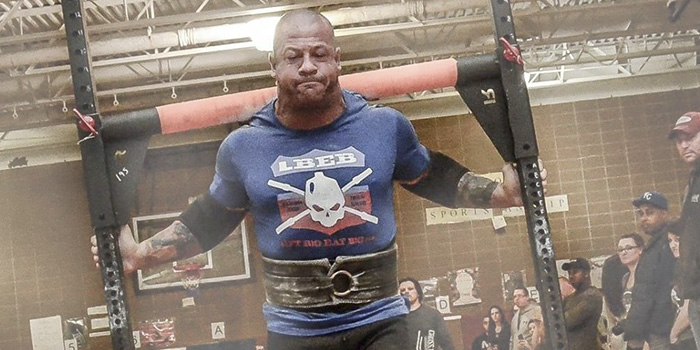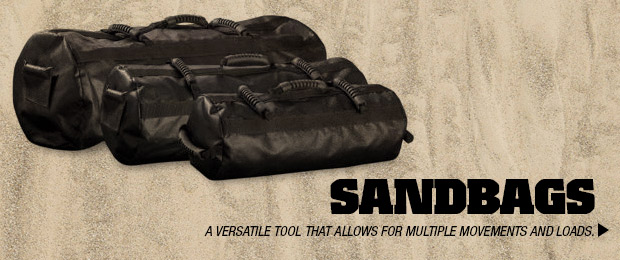
I feel the upper back is an area is a weak point for many competitors in the sport of strongman. I considered myself fairly strong when I first started the sport, having already done a few powerlifting meets before. I remember going to buy my first Atlas Stone from someone I found on Craigslist, and I started with a 225-pound stone. The guy rolled it out for me and said, “With your deadlift, you should have no problem picking that up.”
Well, I could deadlift over 600 pounds, but couldn’t budge a 225-pound stone to put in my car. Needless to say, I was very humbled and realized this strongman thing might be a lot harder than I thought. Once I finally got the hang of how to pick up a stone, I went a little overboard with it and shouldered it over and over, having one of the best training sessions of my life. The next day, I couldn’t believe how sore I was. It literally hurt to breathe because my whole upper back hurt so badly. This, of course, told me this was a very weak area for me, and I needed to work on it.
RECENT: Gain Weight in Your Off-Season with This Meal Plan
The upper back comes into play in nearly every event. A weak upper back will surely hold you back and increase your chance of injury. For cleaning a log, you need to have a very strong upper back, as you need to pin the log on top of your belly to clean it up. The transition on a continental clean of an axle from your belly to the rack position requires a strong upper back to hold the bar in position before you pop it up. Carrying any weighted object, like sandbags, kegs, Husafell Stones, etc., requires you to glue them to your chest so you don’t drop them. From a hypertrophy standpoint, the bigger your upper back is, the more support you have for the squat, which lets you hold the yoke in place while moving as fast as you can.
Even if you are not a strongman competitor, you need a strong upper back to lock out a heavy deadlift or to stay upright when coming out of the hole of a front squat. Even stabilizing a heavy weight overhead for the down command requires upper back strength.
Let’s go over some of the best upper back exercises I have used to bring up my strongman events.
Snatch Grip Deadlift
The Snatch Grip Deadlift is one of my go-to accessory lifts for the deadlift. First, its carry over to Stone Loading is where you can really see the benefit. With a large diameter stone, your upper back has to really work from the wider grip, much like you do when you do a Snatch Grip Deadlift. Just make sure when you do these your hands are wide enough and not just a little outside your normal grip like I see a lot of people do.
I’ve also seen a huge carry over to a Car Deadlift. In the Car Deadlift, you want to stay as upright as possible using the legs to “push away” the floor. The Snatch Grip Deadlift teaches you how to stay upright through the movement to help improve upon this. When I have a Car Deadlift in a competition coming up, I like to do Snatch Grip Deadlifts right after as the main accessory movement. I won’t get into the form, as Murph did a great job with that here.
Meadows Row
If you are no stranger to bodybuilding, then I’m sure you are familiar with the Meadows Row. I love this row for strongman because of the elbow out position. When you choose your accessory work, you have to think of how it is going to help improve your events.
With the Meadows Row, you are working the same muscles that hold the log in place when cleaning it up to your shoulders. In the lap position of the log, you should glue the log to your lower chest/upper abdomen with your elbows up.
You can use straps on the end of the sleeve or you can add the Meadows Single Row Handle for an easier grip.
Dead Stop Dumbbell Row
The Dead Stop Dumbbell Row is much more difficult than regular rows, as we are taking out the momentum and some of the stretch reflex. Again, this translates better to strongman, as we are always picking things up off of the ground from a dead stop. Make sure you are pausing for just a second on the floor, and then explode up. Think about moving the weight, not just what muscle you are working.
Descending Pause Chest Supported Row
I picked this one up from Nate Harvey. It’s absolutely brutal on your upper back, so this is one I highly recommend you add. Start with a light weight, or you will be humbled fast. Hold the first rep for six seconds; the second one for five seconds; the third rep for four seconds; all the way to one second. Squeeze your upper back tight here. Think about how you pull in a Husafell Stone, sandbag, keg, etc., and you will see how this carries over very well.
Face Pull to External Rotation
Everyone who trains should be doing face pulls of some variety. They are just too good for shoulder health and posture. I got this variation from Josh Bryant. I especially like to do these at the end of a training session.
These can even be done as a warm-up before pressing. I also prefer to do these on suspension straps rather than a cable because you can easily adjust the difficulty by stepping forward to make it more difficult or by stepping back to make it easier during the set. When I control the negative portion of the lift, I feel the rear delts much more than when I use a rope on a cable.
You start like a normal face pull, but as you come closer in, you rotate back. I like to think of it as a double bicep pose or “field goal” position. Just make sure you keep tension constant the whole time, as it’s easy to lose momentum. Keep it nice and controlled throughout the movement.
Here are some programming considerations as to why upper back strength is a weak point for many competitors. Training events take a long time, as we all know. Just setting up events and putting everything back takes time.
Personally, I like to have a separate day just to focus on my back. However, for those of you who are short on time, these are movements that you absolutely cannot skip. The best way to incorporate them is to superset them while doing pressing accessory work.
Here’s an example of how to do so:
1. Log Press 3 x 6 at 75%
2a. 2-Board Close Grip Bench 3 x 8
2b. Dead Stop Dumbbell Row 3 x 10 each
3a. Incline Dumbbell Press 3 x 10
3b. Descending Pause Chest Supported Row 3 x 6
4a. Weighted Push-Ups 3 x 12
4b. Face Pull to External Rotation 3 x 12
Supersetting these exercises will, of course, have you breathing heavy at first, but as you get used to them, they will also improve your conditioning.
Give these a shot if you haven’t already and drop a comment below to let me know what you think.











Bruh the dude is a professional strongman -- you saying PED's is the difference between him and you?
Super useful Matt thanks for sharing.